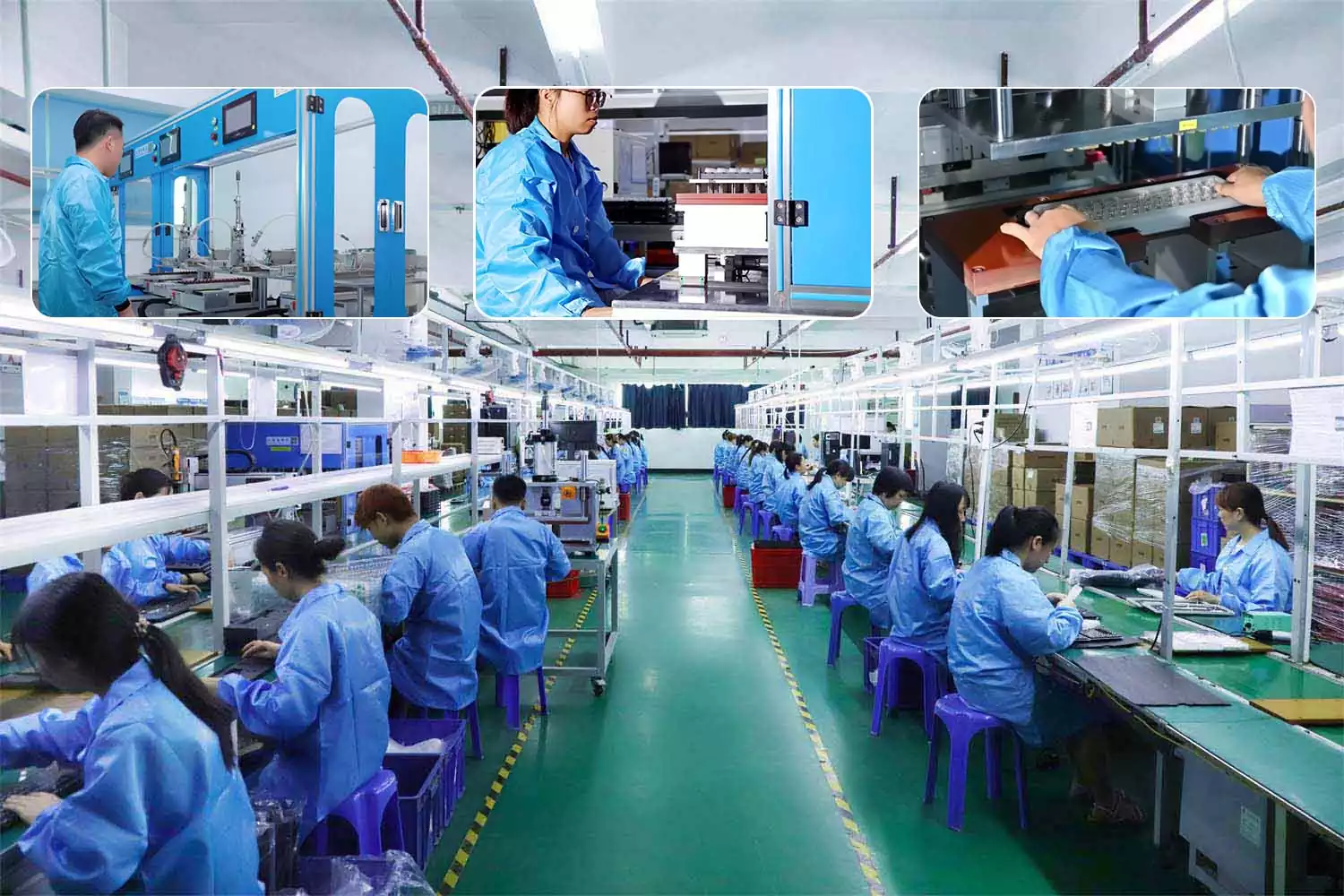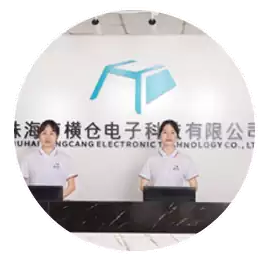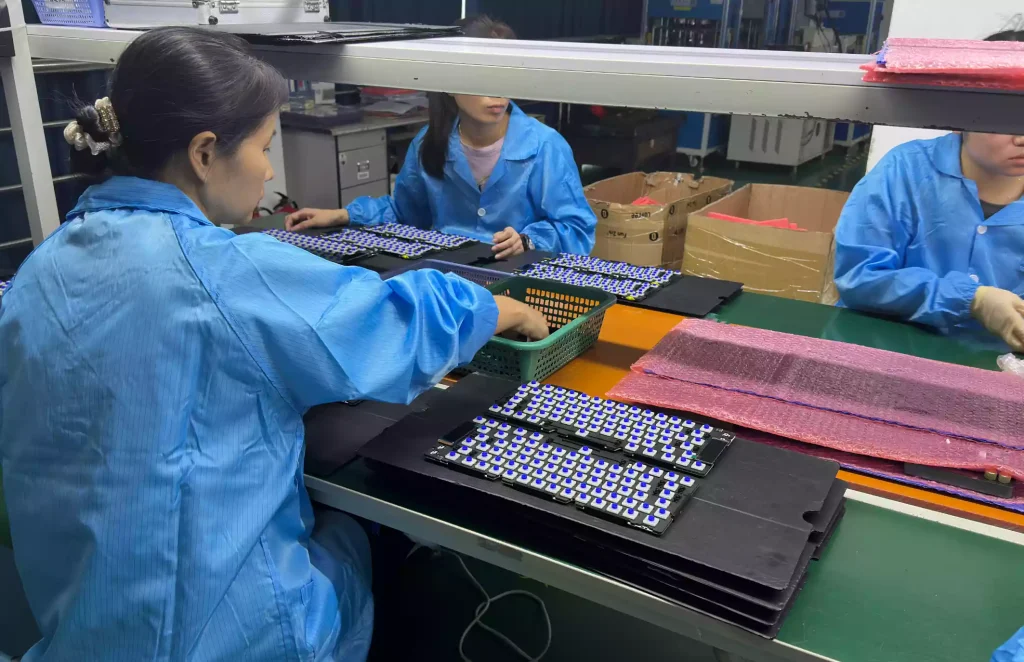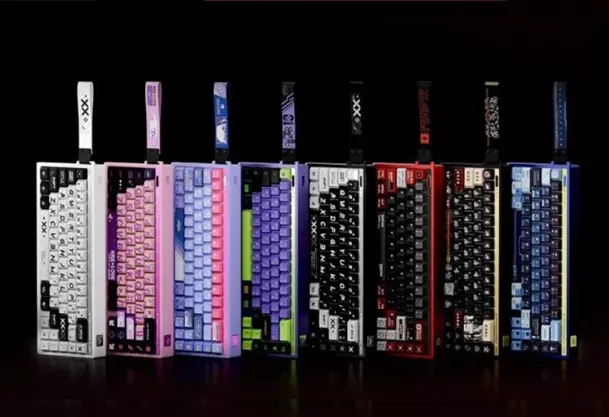In the Age of Mechanized Production, Why Does Manual Switch Lubrication Become the Secret Weapon for High-End Mechanical Keyboards?
In the field of mechanical keyboard manufacturing, large-scale automated production has become the norm—yet there is one process that still relies on the hands and experience of skilled craftsmen: manual switch lubrication. As a crucial step in keyboard manufacturing, the switch lubrication process directly determines the typing smoothness and sound clarity of mechanical keyboards. Zhuhai Hengcang Electronic Technology integrates this traditional craftsmanship with modern technology, delivering an exceptional user experience for keyboards.
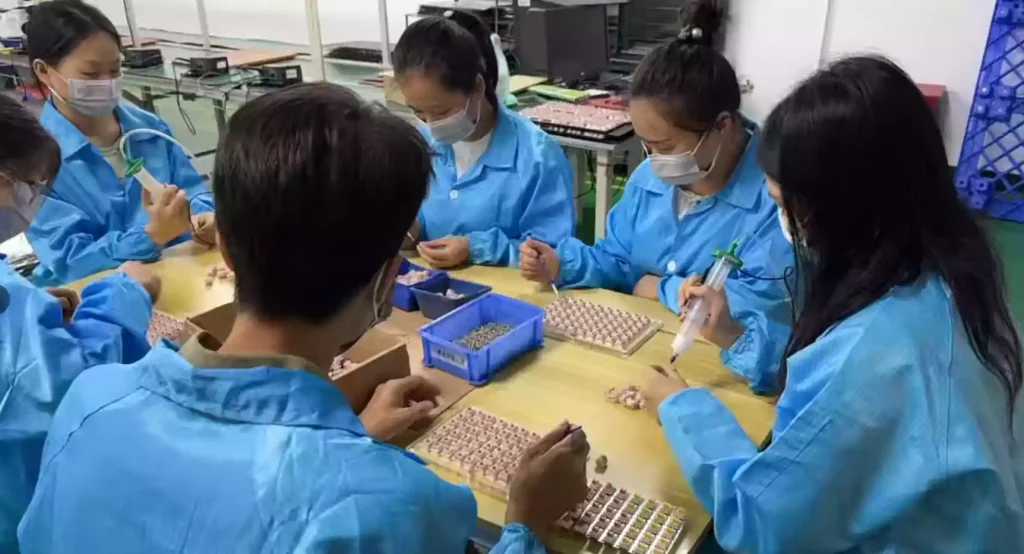
What Is Switch Lubrication? Why Is It So Important?
Simply put, switch lubrication refers to the process of adding specialized lubricant inside mechanical switches—the core components of mechanical keyboards. Each key on a mechanical keyboard is equipped with an independent switch, which contains internal parts such as a metal contact leaf, a spring, and a plastic stem. Over time, friction between these components generates unwanted noise, and the typing feel gradually becomes stiff.
The manual switch lubrication process has two primary goals: reducing inherent switch noise and ensuring smoother tactile feedback throughout the switch’s actuation process. Specifically, lubrication addresses several common issues:
- Spring ping: Metallic noise produced when the switch spring compresses and rebounds.
- Contact leaf rattle: Noise caused by the plastic stem’s "legs" making contact with the metal contact leaf.
- Stem-to-housing friction noise: A "scratchy" sound from friction between the plastic stem and the switch housing’s rails.
- Stiff typing feel: Excessive friction during stem movement when no lubrication is applied.
For users pursuing an exceptional typing experience, switch lubrication is more than just a maintenance step—it is a key way to customize a keyboard’s tactile feel and sound profile to their preferences.
Zhuhai Hengcang’s Manual Switch Lubrication Process
Zhuhai Hengcang Electronic Technology adheres to strict process flows and quality standards for manual switch lubrication, ensuring every mechanical switch meets optimal performance criteria.
Preparations Before Switch Lubrication

Before starting the manual switch lubrication process, technicians at Zhuhai Hengcang Electronic Technology first complete a series of preparatory steps.
Step 1: Switch Disassembly
Using a specialized switch opener (a tool designed for mechanical keyboard switches), technicians disassemble each switch into four components: the top housing, stem, bottom housing, and spring. This step requires skilled technique to avoid damaging the switch’s internal structure—critical for maintaining the switch’s original performance after lubrication.
Step 2: Cleaning Process
Next, technicians gently remove dust and debris from the switch’s interior using small brushes or cotton swabs. Zhuhai Hengcang places special emphasis on a dust-free operating environment, ensuring that no impurities mix with the lubricant (a common issue that degrades lubrication effectiveness and causes new noise over time).
Precise Lubricant Selection
Lubricant selection is a cornerstone of the switch lubrication process. Zhuhai Hengcang carefully chooses the right lubricant based on two key factors: the type of mechanical switch and client requirements.
Commonly used lubricating greases include industry-standard options such as Miller 3204, Payson 3204, GIN01, and GIN02. For linear switches (switches with smooth, consistent actuation), greases with moderate viscosity are typically preferred to balance smoothness and responsiveness. For tactile switches (switches with a "bump" during actuation), special consideration is given to how the grease affects tactile feedback—too thick a grease can dull the bump, while too thin a grease fails to reduce noise.
Additionally, Zhuhai Hengcang offers customized solutions: based on client preferences, it may use a DuPont 105 + 205 mixed grease (a popular combination among enthusiasts for its versatility) or other tailor-made switch lubricants.
Comparison of Common Lubricant Types & Their Characteristics
| Types of Lubricating Grease | Characteristics | Applicable Scenarios |
|---|---|---|
| GIN01/GIN02 | High Cost-Effectiveness, Exceptional Performance, and Generous Volume | For Daily Use, Top Choice for Cost-Effectiveness |
| DuPont 105 + 205 Mixed Lubricating Grease | Stable Performance, Adjustable Ratio | High-End Customization, Adjustable Based on Preferences |
| Jiuxuan Peripherals Custom-Made Switch Lubricating Grease | More affordable in price, with performance surpassing DuPont | Beginner-Friendly Switch Lubrication, Large Capacity |
| Miller 3204 | Widely Recognized, Well-Balanced Performance | Professional Enthusiasts, Compatible with a Variety of Switch Types |
Precise Lubrication Process
The manual switch lubrication process at Zhuhai Hengcang Electronic Technology is extremely precise, with specific lubrication methods for each component:

Spring Lubrication
Spring lubrication is the key step to eliminate spring ping (metallic noise from springs). Technicians use a brush dipped in an appropriate amount of lubricating oil, and brush the oil around the two ends and both inner/outer sides of the spring—ensuring uniform lubrication. This step requires precision: too little oil fails to eliminate spring ping, while too much causes a "squishy" sound when pressing the switch.
Stem Lubrication
Stem lubrication focuses on the friction surfaces between the stem and the housing rails. Technicians apply a thin, transparent layer of lubricating oil to either the left/right sides of the stem or the two left/right rails of the switch base. This step demands extremely high accuracy: excessive lubricant results in a mushy feel (sluggish response), while too little fails to effectively improve typing smoothness.
Metal Contact Leaf Lubrication
Metal contact leaf lubrication is primarily for linear switches; it can usually be omitted for tactile switches. Technicians apply a thin layer of lubricating oil to the area where the metal contact leaf touches the stem’s "legs," reducing contact noise.
Assembly & Testing
After all components are lubricated, technicians carefully assemble the switch and conduct an initial test. Zhuhai Hengcang Electronic Technology uses a unique testing method: pressing the assembled switch at four different diagonal angles (front, back, left, right) to ensure the lubricant fully contacts all friction surfaces.
Every lubricated switch undergoes hand feel testing to confirm smooth key presses and no unwanted noise. Leveraging years of experience, Hengcang’s technicians can identify even the most subtle differences in hand feel—guaranteeing each switch meets optimal performance standards.

Comparison Between Manual and Machine-Based Switch Lubrication
In large-scale keyboard production, machine-based switch lubrication is the mainstream method for improving efficiency. However, Zhuhai Hengcang Electronic Technology still adheres to manual switch lubrication—and the reasons are clear:
First, manual lubrication enables more precise lubricant control. Skilled technicians can adjust the amount of lubricant based on the specific condition of each individual switch, while machines can only operate according to uniform standards. This customized handling is critical for high-end keyboards.
Second, manual lubrication avoids over-lubrication issues. Machine-based systems often struggle to control lubricant volume accurately, leading to excess oil that compromises the tactile feel. In contrast, manual lubrication achieves a thin, even coating—ensuring optimal typing feedback.
Most importantly, manual lubrication allows for customized treatment for different switch types. Linear switches and tactile switches have distinct lubrication needs; even switches of the same type may require minor adjustments. Manual lubrication can meet these subtle, differentiated requirements.
Zhuhai Hengcang’s Quality Control System
Zhuhai Hengcang integrates manual switch lubrication into its rigorous quality control system. Every keyboard undergoes multiple tests after lubrication, including:
- Tactile Consistency Testing: Ensures uniform hand feel across all keys.
- Sound Testing: Eliminates any abnormal noise or unwanted rattle.
- Durability Testing: Simulates long-term use to verify the longevity of the lubrication effect.
Hengcang has also established a comprehensive feedback mechanism, using real-world user experience to continuously optimize its lubrication process. This user-centric philosophy has earned its keyboards high recognition in the market.
Future Outlook for Manual Switch Lubrication
As the mechanical keyboard market continues to segment, demand for manual switch lubrication is expected to grow steadily. More users are seeking personalized customization to achieve a unique typing experience—and Zhuhai Hengcang is constantly exploring new lubricant formulas and processes to adapt to this trend.
In the future, we may see the application of more innovative lubricating materials, as well as new processes that combine semi-automation with manual work. Hengcang is also researching ways to further extend switch lifespan through advanced lubrication techniques, enhancing product sustainability.
Conclusion
As a meticulous craft in mechanical keyboard manufacturing, manual switch lubrication reflects Zhuhai Hengcang’s unwavering commitment to product quality. In an efficiency-driven industrial era, Hengcang insists on infusing "soul" into each switch through the hands of skilled technicians—a craftsmanship spirit that defines the value of high-end keyboards.
Through precise lubricant selection, meticulous lubrication processes, and strict quality control, Zhuhai Hengcang ensures every manually lubricated keyboard delivers a superior typing experience. For users who truly value keyboard feel, the difference brought by this detail-oriented craft is unmistakable.
Manual switch lubrication is more than a technique—it is an art form. Hengcang’s expertise in this area sets it apart in the highly competitive keyboard market, making it the top choice for quality-focused users. As mechanical keyboard technology evolves, manual switch lubrication will continue to advance, bringing even better input experiences to users.

